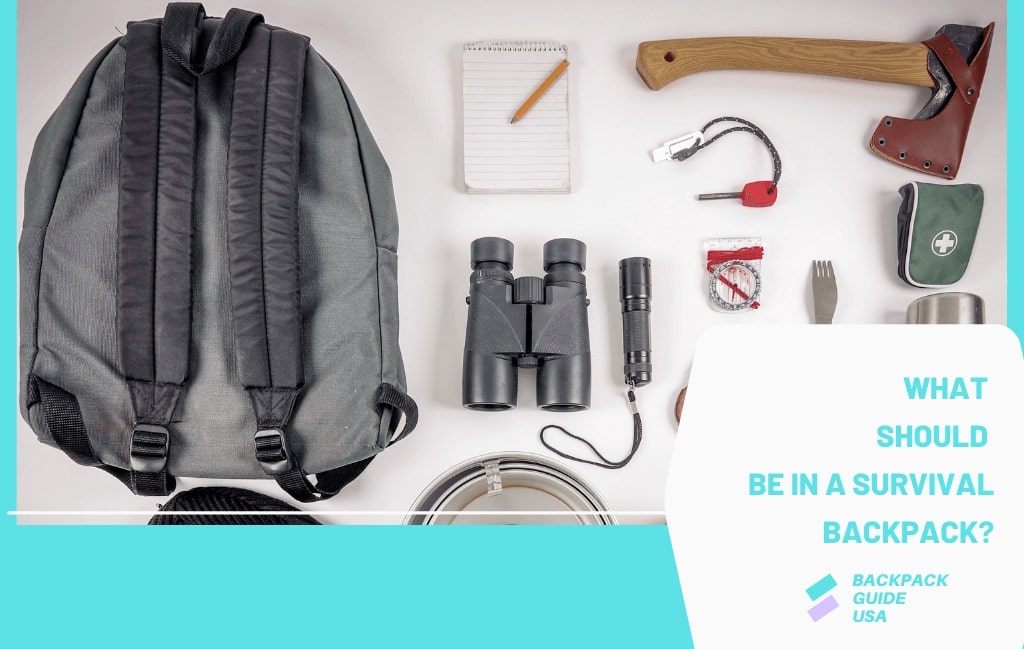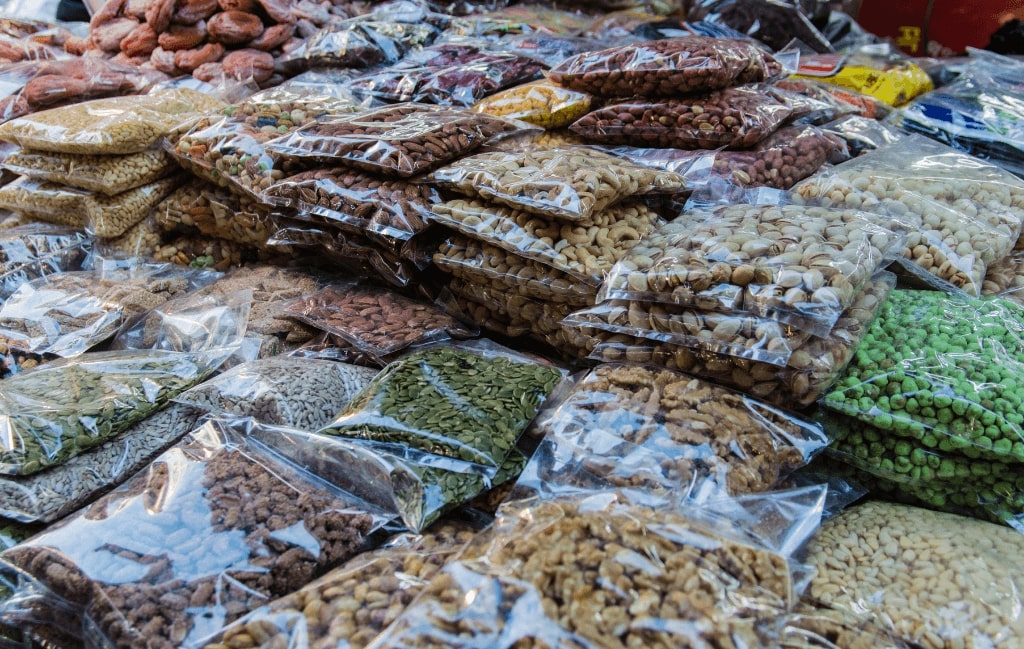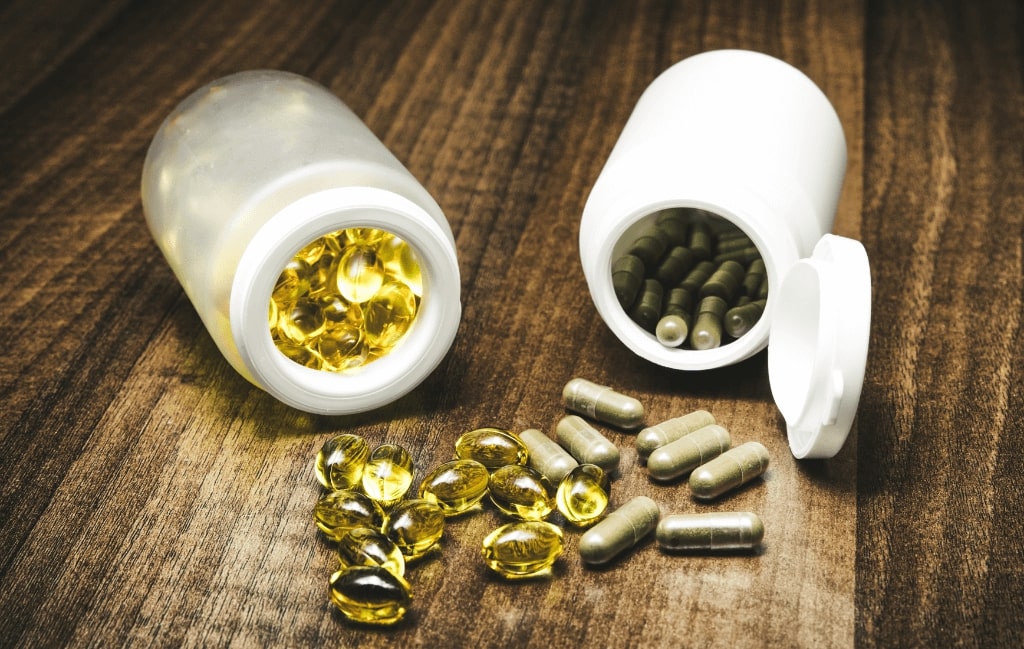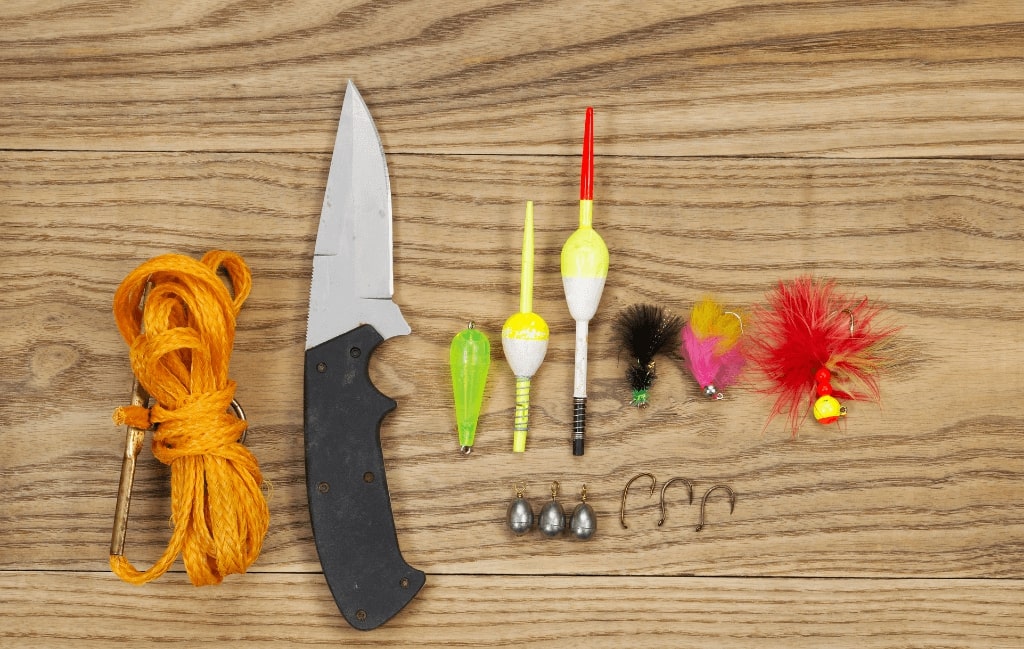What Should Be in a Survival Backpack? A Complete List

A survival backpack is a must-have when it comes to prepping for any type of event that may happen.
From a minor inconvenience like traveling on a rainy day or being stranded in your car because of snow to major events like natural disasters and societal breakdowns, you never know when you will need to take care of yourself and depend on no one else.
With that said, what do you actually need in your survival backpack? What kind of items will give you the help and support needed when you need it most? More importantly, how can you keep all of those items organized and accessible?
This article will discuss some of the essential things to include in your survival backpack. From food rations to first aid kits and everything in between, let’s get started.
What to put in a survival backpack?
- Food
- Mylar Bags
- Oxygen Absorbers
- Vitamin and Mineral Supplements
- Multipurpose Food Bars
- Fishing Kit
- Water Purification Tablets or Device
- Nonperishable Food Items
Food:
Before we dive into the different types of foods you can put in your survival backpack, let’s look at the two main ways to store these items.
For most people, this will either be by purchasing an already assembled food kit or making your own. Storing and packing dry foods like rice, oats, beans, etc., are easy thanks to lightweight Mylar bags and oxygen absorbers (we discuss both of these options below).

However, if you have a hard time finding long-lasting non-perishable foods that you use regularly, it may not make sense to buy food kits. Instead, you may want to spend more time gathering items on sale and less on shelf life when prepping.
The other option, of course, is making your own food rations. This can be done by purchasing a lot of single-serving dehydrated foods and then packing them into sealable containers.
However, with this method you probably won’t have the convenience of meals that come already prepared for you. Instead, you will need to add hot water to each individual packet as needed.
Mylar Bags:
To store most types of non-perishable foods in your survival backpack, it will be necessary to package them in some sort of aluminum or plastic bag.
The reasoning for this is because of anaerobic bacteria which, in the right environment, can break down and rot most types of food. To avoid this from happening, you will need to keep these items sealed inside a container with oxygen absorbers.
Mylar bags are probably the best choice here as they provide both a barrier against moisture on one side as well as being light enough to be stored easily in your bag without being too cumbersome. They also come with handy sealable pouches which make storage even easier.
However, Mylar bags can be expensive, so if this isn’t something that fits into your budget there are alternatives like regular Ziploc bags or several layers of plastic wrap (several layers do not allow for water vapor to escape).
Oxygen Absorbers:
Mylar bags aren’t enough to completely protect your food rations from anaerobic bacteria. The additional use of oxygen absorbers will help remove the remaining oxygen in your bags to extend the shelf life of your food rations even more.
These items come in either powder or puck forms and you simply place one into each Mylar bag before sealing it shut. They only need a bit of air for activation so that these packets can be squeezed down pretty tightly without any trouble.
Holding up well against changes in temperature and moisture, along with being relatively inexpensive, oxygen absorbers are probably the best way to ensure that your food stays fresh for as long as possible.
However, if you’re using Ziplocs or plastic wrap make sure that you monitor the food closely until you know how long you can store it without spoiling.
Apart from Mylar bags and oxygen absorbers, here are some other items you may want to include:
Vitamin and Mineral Supplements:
To ensure that your body is getting the vital nutrients needed for proper function (regardless of how long you’re out), consider adding a vitamin or mineral supplement into your survival backpack kit.

Pack these in an opaque container so that they do not spoil as quickly (in the sun) as their glass counterparts. Multivitamins are probably the best choice here since they work with a variety of foods and also help boost immune systems too.
Multipurpose Food Bars:
After adding all sorts of different food rations to your backpack, it’s good to round things out with an emergency food item that will also store well.
Something like a CLIF Bar or similar is probably the best choice here and comes in handy for situations where you’re on the move, which is why they are included in most survival kits due to their small size and lightweight properties.
These multipurpose food bars can be used as both emergency food rations and even as a backup source of water (by adding hot water).
So this makes them one of the most versatile items to add to your kit while still being something that won’t take up much space at all.
Plus, they are easy to eat without preparation, so it’s perfect if you need some quick calories after working hard in the outdoors too. For long-term storage, you can consider packing several of these in your kit and tearing off individual pieces as needed rather than trying to eat a whole one.
Fishing Kit:
Fishing is another option that could help you catch some fresh fish which would provide yet another emergency (or even regular) food supply for use in your survival backpack.

Some kits come with everything you need to be bundled together while others may require basic supplies like hooks, lines, sinkers, etc.
Make sure whatever fishing kit you include has enough equipment to get the job done since it’s better too much than not enough!
If available, I’d suggest getting one that offers different types of lures as well, so there are more options when searching for dinner after a long hard day hunting or gathering.
Water Purification Tablets or Device:
In order to make certain that the water you consume is safe, include at least one means for purifying it before consumption.
While a full-on filter would be best (such as in this example of my own survival backpack), you can also use tablets or devices made specifically to kill bacteria in your drinking supply.
For long-term storage, these items will need to be put into some sort of sealed plastic container to protect them from light exposure, reducing their shelf life considerably otherwise.
Nonperishable Food Items:
Unless you plan on being out and about during all hours of the day, there will be times when you won’t have access to fresh food such as plants and animals.
This can be especially true if you are in a survival situation, so having some nonperishable food items on hand is essential. Items like freeze-dried food and UHT milk will store well for long periods of time (like up to five years) without taking up much space at all.
Unlike the multipurpose bars above, you’ll need water to reconstitute these quickly, but they tend to taste better since they haven’t been dried or otherwise preserved as well.
Making sure that your backpack supplies include every needed item and nothing extra is vital when considering how to put together the best survival kit possible.
You will also want to make sure that you have enough room left over for other things like clothing, fire starting supplies, etc.
In fact, the above photo shows a much larger backpack that has been modified for the specific purpose of providing survival supplies.
You can include many other items in your kit such as a first aid kit, compass, matches/lighter, etc…
But if you plan to stay close to home and not be gone too long, these few suggestions should help get you started on the right path towards creating an effective emergency backpack filled with all the necessary gear to survive!
Final Notes…
I hope I’ve shown you that building a survival backpack is more than just throwing items into a bag and calling it good.
Having the right equipment on hand will certainly help keep you safe in an emergency, but making sure you know how to use everything properly can make all the difference as well!
If you want to learn even more about narrowing your survival pack down to only the absolute essentials, please check out my other article titled “15 Bushcraft Camping Gear: Every Traveler Should Carry”.
 John
JohnI am John, an outdoor gear staff expertise with tons of practical knowledge. My favorite hobby is moving around the world and adventurous in all the parts of the earth. I have been a worldwide traveler for over 10 years now with no sign of slowing down. I’m happily espoused and residing with my kids in California.
Junyuan BagsTen articles before and after
Best North Face Backpack for Diaper Bag (Updated 2021)
What are the best sleeping bag materials? (Choosing Guide)
12 Best Backpacks for Engineering Students (2021)
How To Attach a Sleeping Bag To a Backpack: A Step-By-Step Guide | Backpack Guide USA
Backpack Guide to Choosing The Best Backpack 2019
Best Hunting Backpack Under 100 Bucks – Buyer's Guide 2021
The North Face Youth Recon Squash Backpack Review (2021)
What is a Backpack Rapper? (Updated 2021)
What Is the Best Backpack to Take on a Cruise? – JUNYUAN Bags | Professional Bag Manufacturer
Waterproof Laptop Backpack craftsman tool bags




 Mobile/What's App/Wechat
Mobile/What's App/Wechat E-Mail
E-Mail ADD
ADD




